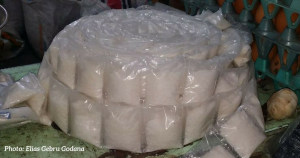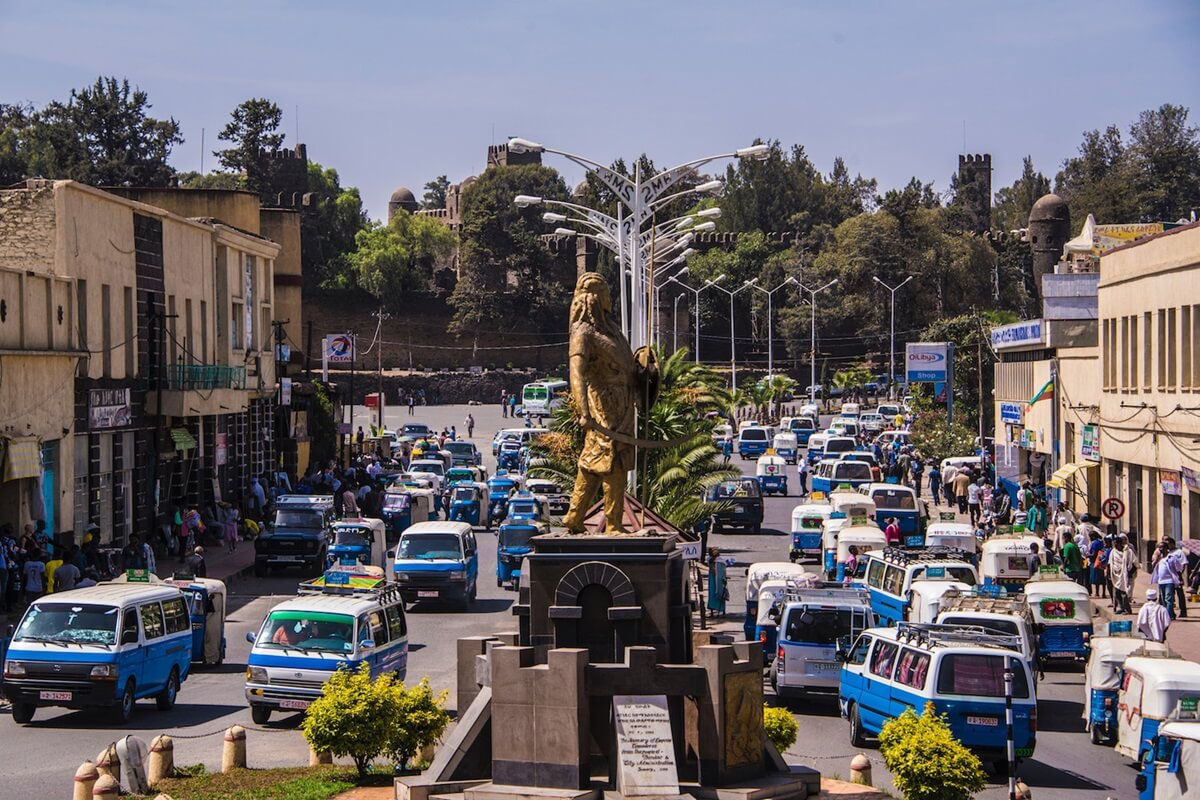Analysis: The sour taste of sugar in Ethiopia. Corruption, incompetence and empty hope
Samuel Bogale
Addis Abeba, November 21/2017 – On October 26/2017 at least ten people were killed and 20 more were wounded by security forces during a fresh round of protest that started two days earlier in Ambo city, 125 km west of Addis Abeba, and one of the epicenters of the 2014-2016 Oromo protests.
As the confusions on what caused this latest protest in the city began to clear up, news came out that it began two days earlier when a group of young men from the city surrounded and blocked three trucks allegedly loaded with sugar and were passing by the city.
An article published on The Guardian on November 07 confirmed the news when it quoted a first year undergraduate student from Ambo University as saying, “sugar is so expensive now, the price has tripled, and they’re exporting it to other parts of the country but the people here don’t have any. It’s not fair.”
Recently, sugar has become not just scarce to trigger death at protest rallies, but a scandal hit commodity Ethiopian authorities found themselves scrambling to understand.
The latest scandal began when the Ethiopian Sugar Corporation, a corporation which is also responsible for the expansion of sugar factories in the country, made a deal to export 44,000 quintal of sugar to Kenya for a payment of US$2.2 million. It quickly boiled down to a story of disagreement and miscommunication between the Ethiopian Sugar Corporation and Agri Commodities and Finance, a Dubai based company that signed a deal with the Corporation, which led to the sugar stranded in the Ethio-Kenya border town of Moyale for nearly two months before the sugar loaded truckers make a u-turn back to Ethiopia.
A deal Ethiopia lost from the beginning
A simple calculation would reveal that the US$2.2 million of the sugar price deal struck between the Ethiopian Sugar Corporation and Agri Commodities and Finance equals around 50.6 million Ethiopian Birr at the exchange rate of the time of the deal (59.4 million Ethiopian Birr after the central bank decided to devalue the Birr recently). However, the 44,000 quintal sugar multiplied by the price the corporation sells the sugar to state organized union shops (which is 1,400 Ethiopian Birr per quintal before tax), would be the equivalent of 61.6 million Birr. Which means the Sugar Corporation would have made more than 11 million birr extra had the sugar been simply distributed in the country, where it’s needed the most.
But according to Gashaw Ayichiluhim, corporate communication director of the Corporation, the decision was made with a hope to earn the country the equally needed foreign currency. “We decided to export the sugar after the management board’s decision; we have this vision of being one of the top ten sugar producing and exporting countries by 2023,” he told Addis Standard, “until then we needed to evaluate ourselves and be ready with logistics, market relation and foreign currency,” he added.
other than the need the secure foreign currency, Gashaw cannot explain why the corporation decided to export the sugar while the country has been consistently importing it with foreign currency to meet the domestic demand; or when sweet industries were threatened with closure for lack of it. Until recently, no amount of sugar was being supplied to these factories by the corporation. A report by a local newspaper published on September 19, 2017 revealed that MOHA Soft Drinks S.C., the biggest soft drink industry in the country, has stopped producing many of its soft drink varieties due to “sugar supply cut” from the Corporation. Addis Standard learned that the company has currently started production after importing its own sugar from abroad. However, MOHA Soft Drinks S.C wouldn’t tell Addis Standard the amount of sugar it imported and what it cost it to get back to the sweet drinks production. Nib Candy Factory Plc is also among many other sweet factories affected by the supply cut, as was reported by another local weekly newspaper.
Out of the 569,000 quintal sugar needed for countrywide consumption per month, sweet industries need around 125,000 of it. Gashaw was short of adequate explanation, again, what caused this discrepancy but says that it was because the deal with Agri Commodities and Finance was already signed in May, 2017, before the current scarcity ballooned. In addition, the corporation blames the less than usual production for this year on La Niña, which flooded sugarcane farms.
Needless to say, however, it has been more than a decade since Ethiopians began facing sugar scarcity.
For now, the sugar ‘exported’ to Kenya is currently being transported back to Wonji Shoa Sugar Factory, where it was shipped from and it “will be on the market for the community after checking its quality again,” according to Gashaw. And the Sugar Corporation’s deal with Agri Commodities and Finance has been terminated; the Corporation said it will institute a legal action against the Dubai based company while at the same time finalizing preparations to import 700,000 quintals of sugar from Thailand and Algeria to meet the local demand.
The most expensive price is paid by the people of Ethiopia
Currently, save from some expensive supermarkets that, from time to time, sell sugar by rationing to the wealthy in Addis Abeba, state organized union shops happened to be the only hope for Ethiopians to get sugar on monthly distribution pattern. Here in the capital, depending on the Woredas (administrative unites) and their stock, the union shops distribute limited quantities of sugar to households regardless of the size of the family per household.
As per Addis Standard’s observation, a union shop in Yeka Sub-city Woreda 4, a person from a given house with a registered Kebele ID shows up to the union shop at the beginning of every month carrying a valid coupon distributed to all households of the Woreda and buy from two to a maximum of five kilograms of sugar along with three to five liters of edible oil (another commodity on ration in Ethiopia). A kilo of Sugar costs 18.50 birr . If residents miss this monthly opportunity for one reason or another, they will have to wait for the next month.
But this may not be the hardest to contemplate.
As a mandatory obligation, shops and small kiosks are given the names of residents to redistribute the relatively higher quantities of sugar they get from the union shops. “I get from two to five quintals of sugar per month from the union shop I am registered with, and my shop will be threatened with closure for a certain period of time as a punishment if I sell a kilogram of sugar to a random person like before,” Abdi Hussein (name changed), a shop owner in Yeka Sub-city Woreda 4, told Addis Standard. “I can only sell to residents from the house numbers I was given from the Woreda,” Abdi added, showing a list of 41 house numbers, each assigned with names of representatives. Asked if he couldn’t consider helping someone outside of the list who badly wants sugar, Abdi’s answer: “There’s not enough sugar to sell in the first place.”
Just like the state sponsored union shops, the private shops and small kiosks are forced to sell sugar in quotas. Considering the risk they run if they deviate from the list of the households they receive, they earn a miserable margin of profit. They buy the sugar from the union shops for 18.10 birr per kilogram and they have to re-sell it only for 18.50 birr for consumers.
Wubit Assefa, a single mother who lives with her three children shares with Addis Standard the experience she had once at the union shop where she buys sugar and edible oil. “I was lined up to buy the sugar using my coupon and there were some people with no coupon, begging the union people to sell them a small amount of sugar. Among these people was a breastfeeding mother carrying her [newly born] infant and crying to get sugar,” says Wubit, “fortunately we were collecting five kilograms during that month and I couldn’t just leave her there; so after I finished buying, I gave her some from my share of the whole month.” By every stretch, it sounds like a story out of North Korea.
 Some shops have resorted in to a spice-packaging style to redistribute sugar to those who need it the most
Some shops have resorted in to a spice-packaging style to redistribute sugar to those who need it the most
Hit by endemic corruption and failed plans
During a recent corruption crackdown launched by the office of the attorney general and the police, which landed several people in jail, around 16 top and middle level officials were current and former employees of the Sugar Corporation from different plants operated by the Corporation. Metehara Sugar Factory, Tehdaho Sugar Factory and Omo Kuraz V (the later not operational yet) were the factories that saw their managements detained and charged with corruption along with many other government officials, brokers, local businesses and investors.
After it had been reorganized in 2010, the Ethiopian Sugar Corporation had come up with an ambitious plan to construct 10 sugar factories at a cost of more than US$2 billion. It then handed over the construction of seven of the ten factories to the Ethiopian Metal & Engineering Corporation (MetEC), the army’s business empire, itself established in 2010 (perhaps not without a coincidence). The deals were made without having an open bid. But six years down the line, it became clear that MetEC was failing the Ethiopian Sugar Corporation, and the nation at large.
But in August 2017, the head of MetEC, Brigadier General Kinfe Dagnew, appeared at the Ethiopian House of People’s Representatives to defend MetEC against concerns raised by the law makers regarding MetEC’s conduct of business related to the sugar factory constructions. The General had no better answer to give other than take the sole responsibility for the failures. “If anyone is to be held responsible, it is only me,”, he told law makers.
The year 2017 is coming to an end before MetEC completed the construction of Tana Beles I and II, and Omo Kuraz V, which were supposed to be completed in 2013 and 2015 respectively. Last week, among a list of problems it said it faced, problems including shortage of foreign currency, power cut, political instability as a result of a year long protests, and its own administrative problem, high level officials from MetEC said the corporation was a target of a deliberate conspiracy.
Perhaps a result of this monumental failure, Tana Beles Sugar Development Project, which has been in the making for the last six years but couldn’t take off the ground as of yet, said that 93% of its sugarcane product planted on 13,147 hectares of land since three years ago was becoming waste because it hasn’t been harvested on time. The Sugar Corporation is also poised to lose around US$274 million (7.4 billion Birr) because of that, and another US$39.3 million (1.06 billion Birr) just to remove the outdated sugarcane plantation and make the farmland ready for new plantations.
The old ones are the saviors
The first sugar factory, Wonji/Showa Sugar Factory, was built back in 1951 by H.V.A, a Holland Company and started production in 1954. The sugar industry was nationalized and made to be run by the state after the military regime, Derg, came to power in 1974, a legacy the current authorities in Ethiopia continued to pursue.
Currently the Ethiopian Sugar Corporation administers seven factories: Wonji/Shoa, Metehara, Fincha’a, Tendaho, Kessem, Arjo Didesa, and the new one Omo Kuraz II. The communication office of the corporation told Addis Standard that two more, the Omo Kuraz I and Omo Kuraz III, will join the seven factories in few months time. But among the seven factories, currently only one, Fincha’a Sugar Factory, produces the highest although technically five of them, Metehara, Tendaho, Kessem, Arjo Didesa and Omo Kuraz II, have higher capacity than Fincha’a. They are just not working as per their capacity.
At the same time, the demand for sugar demand has soared to six million quintal a year. The corporation is a master in planning; even though the sugar factories in Ethiopia have never exceeded producing more than four million quintal a year even at the peak of their productions, the corporation planed to produce seven million quintal for the year 2016, of which one million quintal would be exported. It ended up producing just 3.5 million quintal, and exported nothing.
Ethiopians keep waiting to buy sugar whenever they need it; it would be good if this happens without having to block a truck carrying one and getting killed in the process. AS









